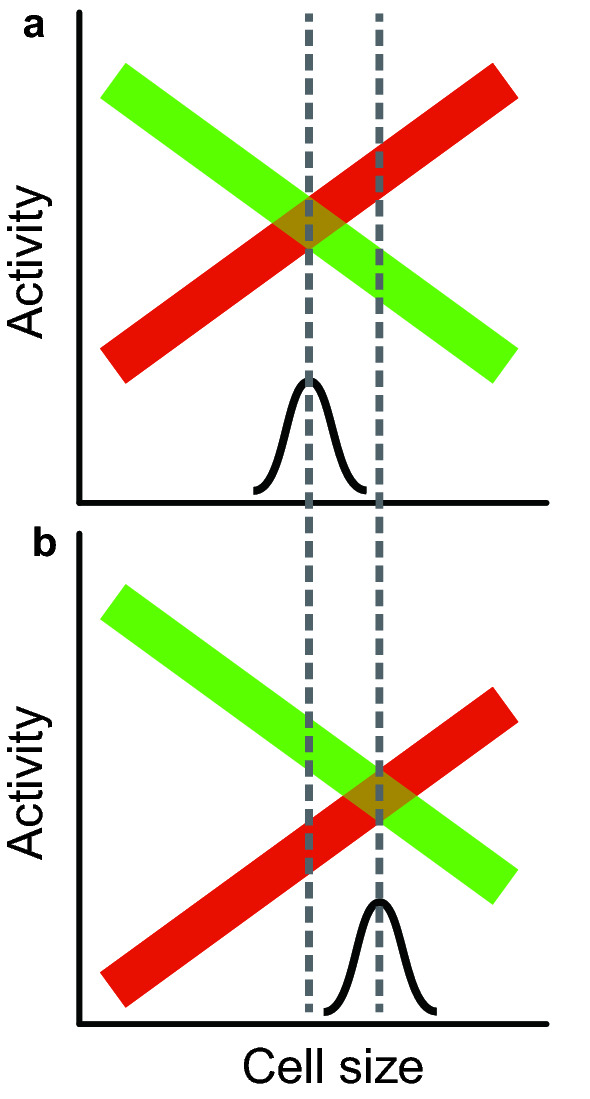Fig. 3.

Model for a size-dependent cell cycle, and for a set-point mutant. a In small cells, a set of inhibitors (green) predominate over activators (red). But as cells grow, the concentration of activators increases, and concentration of inhibitors decreases, until at critical size activators predominate, and trigger cell cycle entry. The variability in cell sizes is determined by the stochastic overlap between activator and inhibitor concentrations. b A set-point mutant. In this mutant (e.g., cln3), one activator is entirely missing, so the whole activator curve is shifted down, and critical size (the set-point, where the activator line crosses the inhibitor line) is shifted to the right, to larger sizes. But the slopes of the remaining activators and inhibitors do not change, and so size variability does not change
